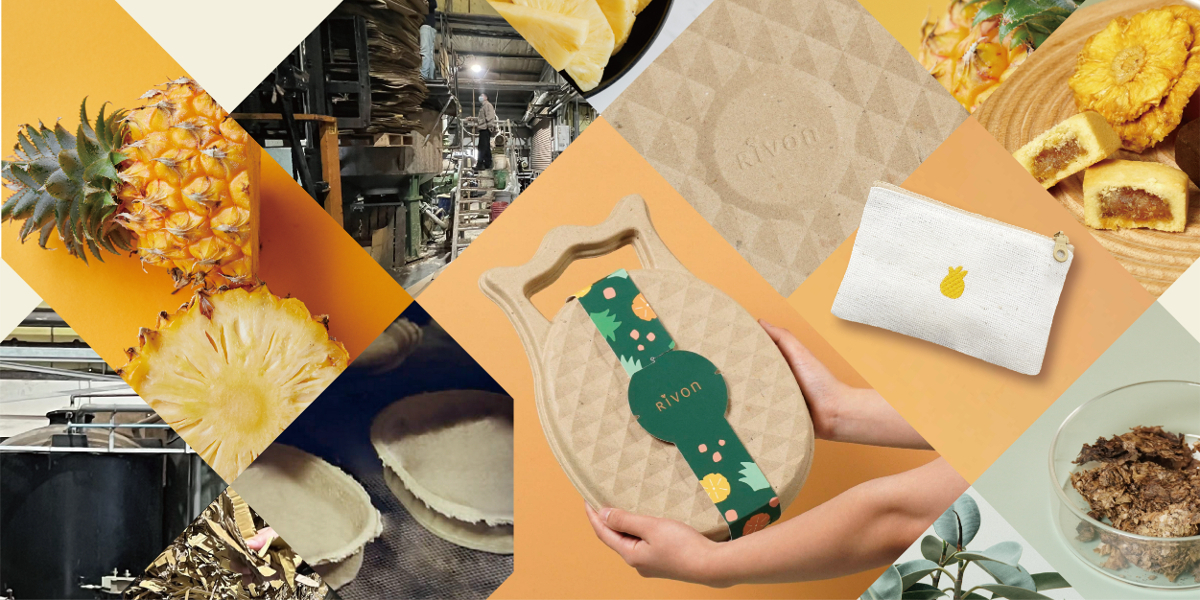AÑO
2023
CATEGORÍA
Hogar
OBJETIVOS
Producción y consumo responsables
PAL. CLAVE
sustainability, natural ingredients, pineapple fiber
PAÍS
Taiwan
CRÉDITOS
Joyce Chiang, Lance Han
LINK
https://enterpriseasia.org/area/hall-of-fame/hall-of-fame-2022/green-leadership-2022/hunya-foods-co-2022/
Forever-Love Sustainable Pineapple Cake Gift Box
Gift box made of all pineapple fiber and paper fiber.
How does it work?
To fit the festive atmosphere, gift boxes often have the problem of excessive packaging, resulting in unnecessary waste of packaging materials. This time, we use pineapple fiber to make the packaging box, hoping that through the power of design, we can bring more possibilities for future gift boxes.
Through the collaboration of Taiwan's original technology and local enterprises, we selected pineapple peels from local small farmers in Taiwan as raw materials. After 2-3 months of sun exposure, we extract the fibers using a natural fiberization process and combine them with 100% recycled paper pulp to create a sustainable gift box concept.
Why is it needed?
The choice of raw materials and manufacturing processes is based on environmental friendliness.
Compared to using ordinary paper as gift box packaging materials, this greatly reduces the negative impact on the environment. It also provides a good option for gift-giving during festivals that has no burden on nature, allowing everyone to enjoy the festive atmosphere while also practicing the goal of a green lifestyle. The pineapple regenerated fiber gift box can be used not only as a packaging box but also as a storage container or plant pot, allowing the packaging material to have the maximum potential for use and reusability.
How does it improve life?
The 100% sustainable material gift box can naturally decompose and return to nature.
Pineapple plants are typically cut down and replanted after only two harvests. However, due to the trend of zero-emissions and circular agriculture, reusing pineapple peels and leaves can increase the value of agricultural residues. According to estimates from tree protection organizations, between 800 and 1200 billion trees are cut down each year for paper production globally. In order to practice sustainable design, the pulp mixed with pineapple fiber in this gift box uses 100% recycled paper pulp, which can effectively reduce forest logging. Additionally, the energy consumption is much lower than that of producing virgin pulp, which can reduce the demand for energy and greenhouse gas emissions such as carbon dioxide. This can also reduce damage to the natural environment.





